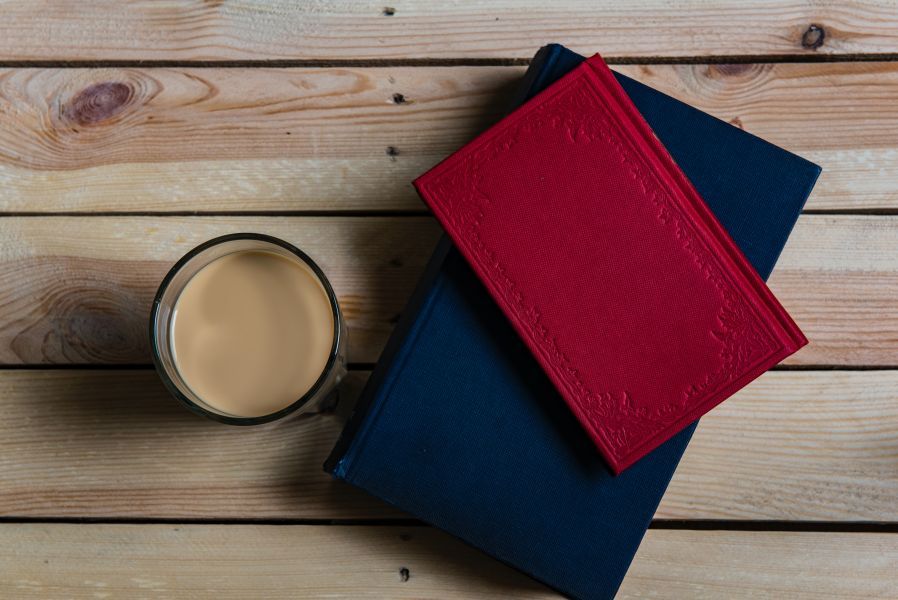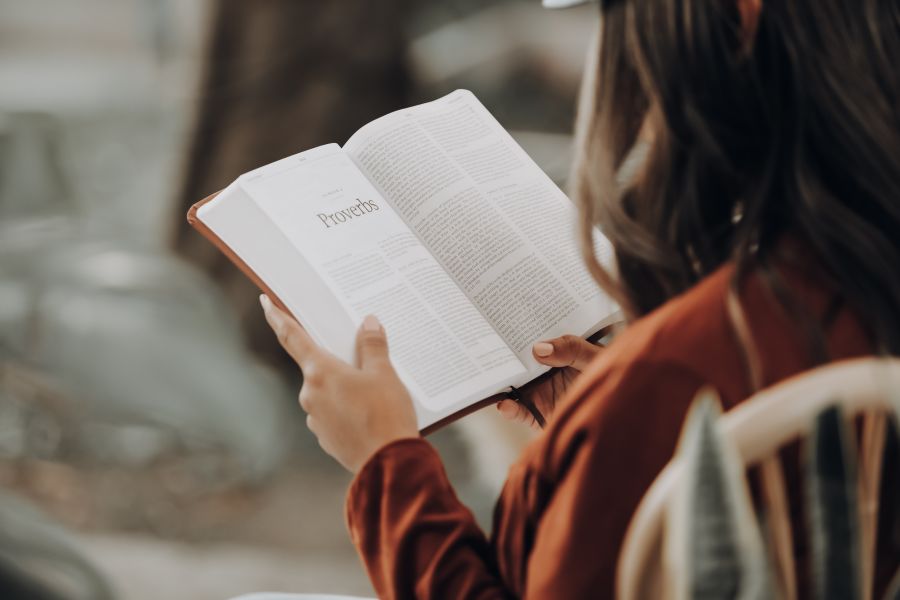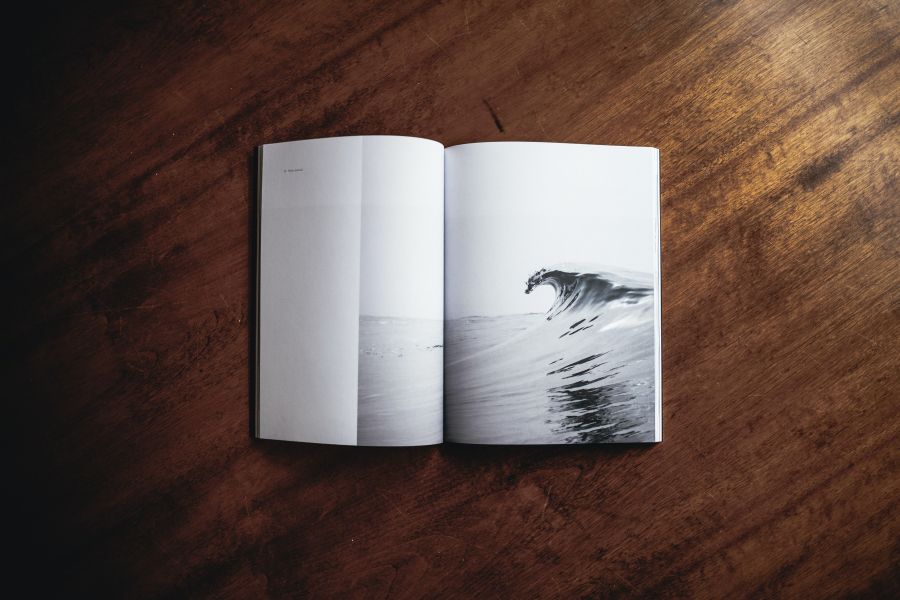八年级下册英语学科法制教育#教案2021模板1
Teaching Aims:
● To learn about passive voice and adverbial clause with when
●To learn to use when/how long questions
●To talk about famous people
●To learn the simple past tense
Important and difficult points:
To improve the students’ abilities
Teaching Procedures:
Warming up by learning about Passive voice
What does the passive voice look like?
Compare these active sentences and passive voice sentences:
active: The boy ate the apple.
passive: The apple was eaten by the boy.
active: Mary will drive the van.
passive: The van will be driven by Mary.
Identifying S-V-DO
Only sentences which have a direct object can be made into passive voice sentences. Only verbs which take a direct object can be used in passive voice sentences. Let’s look at the sentences we saw above.
The boy ate the apple.
subject=boy, verb=ate, direct object=apple
Mary will drive the van.
subject=Mary, verb=will drive, direct object=van
You can probably identify the verb easily. The subject comes before (to the left of) the verb and the object comes after (to the right of) the verb.
Warming up by asking questions
Hello, everyone! I had a party yesterday. What kind of party? Can you guess? It was my birthday party. Yes, I was born on November 5th, 1972. What about you? Let’s find out when were you were born.
T: When is your birthday?
S: April 22
T: When were you born?
S:19—
Now please pay attention to the structure
Sb + was/were + born + in + year 出生于__年
We use it to express when is our birthday.For example:
I was born on October 25th, 1975.
1a Talking about international sports stars
T: Do you like sport? I think many of you like it. What sport do you like?
S: football, volleyball, tennis, table tennis, basketball and so on.
T: Ok! I know you are sports fans. You must know the famous sports stars. I have some pictures of them .Do you know them. Let’s make a list.
International Sports StarsWhat kind of sportDo you like him or her? Why?
Michael JordanBasketballsuperman
Deng YapingTable tennisPertinacity
Martina HingisTennisresourceful
David BeckhamfootballHandsome
Please think about these questions. What sport does he or she play? Do you like him or her? Why or why not?
1b Listening and writing
Listen to the tape and write the year when the sports star were born. I will play it twice. First time you can only listen and the second time you can write.
Answers
Deng Yaping:1973Michael Jordan:1963
Martina Hingis:1980David Beckham:1975
Read the tapescript and try to underline the expressions and shadow the when/how long questions
1c Doing pairwork
First let’s look at the dialogue about Deng Yaping. Please read it after me. When you read please pay attention to the pronunciations and intonations.
A: Who’s that?
B: That’s Deng Yaping. She is a great Chinese ping-pong player.
A: When was she born?
B: She was born in 1973.
Now make the similar dialogue about other people with your partners. I’d like to ask some pair to act it out. For example:
A: Who’s that?
B: That’s Michael Jordan. He is a great American basketball player.
A: When was he born?
B: He was born in 1963.
2a Listening and filling the chart
Look at the pictures. What are they doing? Learn the new words
Hiccup 打嗝
sneeze 打喷嚏
world record means the best in the world
Let’s listen to the tape carefully and fill in the chart.
While listening, try to get the important thing --- “how long”
2b Listening and filling in the chart.
Listen again and fill in the “started” and “stopped” columns.
Who holds world recordHow longStartedStopped
Charleshiccupping69years and 5 months19221990
Danna Greensneezing978daysJanuary13,9811983
Read the tapescript and try to underline the expressions and shadow the when/how long questions
2c Filling the chart and speaking
First let’s fill in the blank with the information from the chart in last part.
A: How long did Charles Smith hiccup?
B: He hiccupped for 69 years and 5 months.
A: When did he start hiccupping?
B: He started in 1922
A: When did he stop hiccupping?
B: He stopped in 1990.
Please practice the conversation with your partner.
Make the same kind of conversation about Donna Green.
The students’ conversation may be like this.
A: How long did Donna Green sneezing?
B: She sneezing for978 days.
A: When did she start her sneezing?
B: She started on January 13,1981.
A: When did she stop sneezing?
B: She stopped on September16, 1983.
Grammar Focus
Please go over this part by yourselves. Put your questions to me if you have any. Please pay attention to the tense and the past forms of verbs. When we talk about things in the past, we should use the past tense. The past form of “be” is “was” or “were”. To the regular verbs, “ed” should be added after them. And as for the irregular verbs we should remember their past forms.
3a Doing pairwork
First you read and fill in the chart with your partner.
The word achievement means “the important thing each person did in life.
AchievementAge
Tiger WoodsStarted golf10 months old
Shirley TempleMovie starThree year old
Wolfgang Amadeus MozartWriting music Four years old
Mei LanfangFirst performed Beijing OperaTen
RonaldoPlayed for his national teamSeventeen
Liu xuanWon a gold medal at the World Championshipseventeen
3b Doing pairwork
Since you have finished reading the chart and filling in your answers, please work in pairs as is the examples in the book.
A: Who is Mozart?
B: He’s a musician.
A: When did he start writing music?
B: When he was four years old years old.
4a Interviewing
Boys and girls, let’s play a game, an interview.
Look at the chart and interview you partners by asking the question.
How old were you when…?
Name AchievementAge More information
Learned to ride a bicycle
Started learning English
Started playing sports
First went to a movie
First had a party
4b Speaking
Who would like to tell us his report about his interview?
John started things early. He learned to ride a bicycle when he was only three years old. Sometimes he fell off the bike, but he never gave up. He was a brave boy.
Closing down by having a free conversation
Some students may be interested in sports stars, but some are not. If you don’t like this topic, you can talk about your favorite persons, instead.
a good time at the party?" "Yes,we did./No,we didn't."
八年级下册英语学科法制教育教案2021模板2
一、教学设计思路
为学生设置情境,帮助学生在不同情况下做出正确的选择和回答,使学生在应用中掌握知识,人教版八年级英语教案上册Unit 5 教学设计。
二、教学目标
(一)知识
1. 掌握如何礼貌地发出、接受、拒绝邀请:Canyou come to my party? Yes, I’d love to. / Sorry, I can’t. today,tomorrow, the day after tomorrow, next week, lesson,invitation
2. 掌握如何谈论自己或别人必须做的事情:Ihave to ...
(二)能力
能够根据日程表中的计划安排自己的活动。
(三)情感
礼貌地发出、接受、拒绝邀请,礼貌地与人交流。
三、教学重点
礼貌地发出、接受、拒绝邀请。Can youcome to my party? Yes, I’d love to. / Sorry, I can’t. today,tomorrow, the day after tomorrow, next week, lesson,invitation
四、教学难点
根据日程表中的计划安排自己的活动并对邀请做出适当回答。
五、教学媒体
电脑、投影仪、邀请卡片
六、教学过程
1.动画导入,激发学生的学习兴趣:
教师可先播放一段有关“聚会”的动画,激发学生的学习兴趣并导入新知。
2.完成任务,合作学习:
教师可以给学生布置以下任务,让学生在完成任务的过程中掌握所学的知识。
任务一:Planning abirthday party.
让学生以小组为单位为某位同学筹备一个集体生日聚会,讨论在生日聚会上大家可以做哪些活动并列出清单。
任务二:Writing aninvitation card.
学生以小组为单位展开活动,制作邀请卡向其他组的同学发出邀请,请他们来参加本组的集体生日聚会。注意邀请卡的用词和基本格式,教案《人教版八年级英语教案上册Unit 5 教学设计》(http://www.unjs.com)。
任务三:统计聚会人数。
学生以小组为单位开展活动。假设班上要组织一次野餐活动,一个学生为组织者,询问组员并统计本组参加的人数及不参加的原因,并做好记录。
group member
Yes / No
reasons
完成任务可能要用到的语言结构:
We are going to have apicnic. Can you come?
When is it going tostart?
I’m sorry. I haveto....
3. 拓展学习:
学生设计假期某一周的日程安排。在设计的过程中,要尽可能合理安排好学习、休闲娱乐等各项活动,并留出一些空余时间。要注意有自己的特色,能联系拓展所学的知识。
七、评价方法
可从以下三个方面来考查学生的学习情况,并将学生学习的评价融入到教学过程中。
①课堂参与情况:积极主动,声音响亮,较流畅地用英语表达自己要说的话。
②合作学习情况:与小组成员共同努力,很好地完成学习任务。
③知识掌握情况:是否已经掌握了所学的知识,并能很好地运用。
八、板书设计
九、达标测试
一、选词填空
1.根据句意,用方框内的词的正确形式填空
have a rest play there bebe busy practice be free listen to
1. Can they __________the music in the classroom?
2. I’m sorry. TomorrowI’m __________ soccer and having a math lesson.
3. He has got a badheadache. Let him______________.
4.__________ a lot ofinteresting books in the library.
5. We’ll have a pianolesson on Friday. The teacher asked us ________ the piano everyday.
6. Paul and Eliza___________ both ________ on Sunday. They can watch the footballmatch.
7. I’m sorry,I___________ really ___________ this week. I can’t go to seeyou.
二、句子搭配
选择适当的答语填入括号内
( ) 1. Would you like acold drink?
( ) 2. Would you like togo to the cinema on Friday?
( ) 3. Would you like ahamburger?
( ) 4. Would you likethat cassette for your birthday?
( ) 5. Would you likehelp with your homework?
a. No thanks, I don’tlike that kind of music.
b. No thanks, I don’t eatmeat.
c. Yes please, I feelvery thirsty.
d. Yes please, I can’tunderstand it at all.
e. No thanks, I don’tlike cinemas.
答案与解析:
一、
1. 应为listento根据题中music,引出词组listen to the music
2. 应为playing,与句尾having amath lesson 呼应。
3. 应为have a rest,注意词组letsb. do sth.
4. 应为There are,因为后面的a lotof interesting books是复数。
5. 应为to practice,注意词组asksb. to do sth.
6.应为are…free,注意句意“他们能看足球比赛”。
7.应为am…busy,注意句意“我不能去看你”。
八年级下册英语学科法制教育教案2021模板3
Unit 1 Playing Sports
Topic 1 Are you going to play basketball?
Section A
The main activities are 1a and 2. 本课重点活动是1a和2。
Ⅰ.Teaching aims and demands 教学目标
1. Learn some new words and phrases:
almost, against, term, cheer, cheer … on, team, win, row, quite, bit, quite a bit / a lot, join, club, skate, volleyball, tennis, table tennis
2. Learn some useful sentences:
(1)I saw you play basketball almost every day during the summer holidays.
(2)Would you like to come and cheer us on?
3. Learn the future tense with be going to:
(1)We are going to have a basketball game against Class Three on Sunday.
(2)Are you going to join the school rowing club?
4. Talk about preferences:
—Which sport do you prefer, cycling or rowing?
—I prefer rowing.
5. Talk about sports and games.
Ⅱ. Teaching aids 教具
图片/海报/教学挂图/录音机/小黑板
Ⅲ. Five-finger Teaching Plan 五指教学方案
Step 1 Review 第一步 复习(时间:7分钟)
复习学过的运动项目名称,引出生词。
1. (展示一些有关运动的图片,并通过师生对话,引出新的运动项目名称。)
T: Welcome back to school, boys and girls. The new term begins. This is our first English lesson this term. Did you enjoy yourselves during your summer holidays? What did you do during your holidays? Did you do sports during your summer holidays?
Ss: …
(板书并要求学生掌握。)
term
T: We all know doing sports is good for our health. Now let’s review some sports and learn some new ones.
(展示学生在打篮球的图片。)
T: Look at the picture. Do you know what they are doing? S1, please.
S1: They are playing basketball.
T: Do you like playing basketball?
S1: Yes, I do. / No, I don’t.
T: How many players are there in the basketball team?
(板书并要求学生掌握。)
team
S1: There are five players.
(展示学生在打排球的图片。)
T: What are they doing? S2, do you know?
S2: They are playing volleyball. (教师帮助该生回答。)
(板书并要求学生掌握。)
volleyball
(用同样的方式引出生词cycle, row, skate, tennis, table tennis, ski。)
(板书,并让学生跟读,要求学生理解cycle, ski;掌握row, skate, tennis, table tennis。)
cycle, row, skate, tennis, table tennis, ski
2. (用黑板上有关运动的生词操练,导出prefer的用法。)
T: Which sport do you like better, cycling or rowing?
S3: Rowing.
T: Good! The phrase “like … better” means “prefer”.
(板书并要求学生理解。)
prefer
T: S4, which sport do you prefer, basketball or soccer?
S4: I prefer basketball.
…
Step 2 Presentation 第二步 呈现(时间:10分钟)
通过师生对话,呈现1a中部分生词及功能句,并使学生初步掌握be going to句型。
1. (利用plan to do sth.,导入“be going to+do”结构。)
T: I’m very glad you all like doing sports and know a lot about them. Do you want to play volleyball tomorrow afternoon? S1, please.
S?1: Yes, I do.
T: So you plan to play volleyball tomorrow afternoon, right?
S1: Yes.
T: OK. When we plan to do something, we can say we are going to do something.
(板书,学习新语法。)
be going to do sth.
T: When I tell you my plan, you retell it with be going to. OK, boys and girls?
Ss: OK.
T: I plan to go out for dinner tonight. S2, please.
S2: You are going to go out for dinner tonight.
T: I plan to climb mountains tomorrow. S3, please.
S3: You are going to climb mountains tomorrow.
T: Good! When we express something that is going to happen or we plan to do something, we can use be going to.
2. (教师让几个学生说说明天户外活动的打算,并引出be going to结构的一般疑问句式,过渡到1a。)
T: OK, S4, please tell me what you plan to do tomorrow afternoon.
S4: I’m going to swim with my brother tomorrow afternoon.
T: Are you going to swim?
S4: Yes, I am.
(板书,学习新句型。)
—Are you going to swim?
—Yes, I am.
(教师视学生掌握的情况来决定是否要进行更多的操练。)
3. (展示一幅即将进行篮球赛的海报,引出单词against, cheer和短语cheer … on。)
T: Now look at the poster. Here is the news. Our class is going to have a basketball game against Class 3 at 5:00 this afternoon. Would you like to cheer them on?
Ss:Yes, we’d love to./I’d love to.
(板书,让学生猜词义,并要求掌握。)
against, cheer, cheer ... on
(出示教学挂图,让学生看图片猜测对话内容,导入1a。)
T: Look at this picture. They are Kangkang and Michael. What are they talking about? Can you guess? Please listen to 1a and then answer the following questions.
(出示小黑板。)
(1) Which class is Michael’s class going to play against?
(2) Is Kangkang going to cheer them on?
(听后核对答案。)
4. (学生朗读1a,画出疑难点和关键词,然后教师解释疑难点。)
(出示小黑板,领读关键词;解释并要求学生掌握almost和win。)
basketball—saw—play—almost—every day—against—Sunday—game—term—come— cheer … on—I’d love to—hope—win
Step 3 Consolidation 第三步 巩固(时间:10分钟)
创设情景,编对话,在真实的语境中培养学生口头交流能力。
1. (根据小黑板上的关键词,分角色表演对话。)
T: OK. Now you can use the key words above to act out the dialog in roles.
2. (教师引导学生,通过讨论新学期的计划来操练be going to+do句型。)
(教师先做示范,然后让学生两人一组练习。)
T: S1, what are you going to do this term?
S1: I’m going to learn English better.
T: What about you, S2?
S2: I’m going to study math hard.
T: Oh, it’s a good plan. S3, do you know what your partner is going to do?
S3: Yes. He is going to learn rowing.
T: Discuss with your partner what you are going to do this term.
3. (创设情景,依据1a编对话,巩固1a及be going to+do句型,完成1b。)
T: Just now you talked about your plans for this term. Now suppose you meet your classmate on the playground and you want to talk about your plans for this week. Please make a similar conversation with your partner according to 1a. You can use the key words on the blackboard.
(板书)
be going to, play, I’m afraid, homework, summer, play against, I hope
(学生两人一组编对话,教师进行鼓励启发,必要时应给予帮助。)
Example:
S4: Hi, S5.
S5: Hi, S4. I am going to play … Are you going to play with us?
S4: I’m afraid I can’t. I have to do my homework first. By the way, I saw you play … almost every day during the summer holidays.
S5: Yes. You know I am going to play in the … game against Class 2 this Saturday. Would you like to come and cheer us on?
S4: Of course. I’d love to. And I hope you will win.
(让几组学生到教室前面表演类似的对话,评出表演组及演员等。)
(教师出示2中运动项目的图片,引导学生巩固be going to + do句型,使他们熟练掌握其用法,并自然过渡到2。)
Step 4 Practice 第四步 练习(时间:10分钟)
完成2和3,培养学生听说能力,并通过大量操练,使他们熟练运用含有be going to的一般疑问句及掌握prefer的用法。
1. (通过看图片,练习be going to的用法,导入2。)
T: Look at the pictures, what are they going to do?
Ss: (Picture 1) They are going to go skating.
(Picture 2) They are going to go skiing.
…
T: Which sport do you prefer, … or …?
S1: I prefer …
T: What about you, S2?
S2: I prefer …
T: S3, do you often go swimming?
S3: Yes, very often.
T: Good. You can also say “quite a lot/a bit”. “Do you often go swimming?” means “Do you go swimming much?”
(板书,并领读,要求学生掌握quite, bit和quite a lot/a bit。)
quite, bit
very often = quite a lot/a bit
I go swimming very often.= I go swimming much.
T: S4, do you go rowing much?
S4: Yes, quite a lot/a bit.
T: S5, do you go skiing much?
S5: Yes, quite a lot / a bit.(肯)
S6: No, seldom.(否)
T: Oh, you don’t like sports. It isn’t good. I think you should join a sports club, and maybe you will like sports there.
(板书,教学生词,并要求学生掌握。)
join, club
T: Discuss with your partner which sports club you would like to join.
S7: I am going to join the school rowing club.
S8: …
(学生两人一组完成2,除了可以用书上所给的运动名称,也可用他们所知道的其他运动名称进行对话。)
2. (让学生听3录音,并完成3。)
T: Michael and Kangkang like doing sports a lot. Do you want to know what sports they often do on weekends? Listen to the tape, then fill in the chart in 3.
(再放录音3,核对答案。)
3. (做一个运用“be going to+do”句型的游戏。)
(挑选若干学生上台,做关于运动的动作,该动作要能使同学们明白并成功猜出运动名称。猜到的同学要用be going to+do询问做动作的同学,以证实自己的猜测是否正确。)
T: Please do an action about your favorite sport.
(S10表演一个动作。)
S9: Are you going to play basketball?
S10: No, I’m not.
S9: Are you going to play volleyball?
S10: Yes, I am.
…
(让学生尽量多表演动作。)
Step 5 Project 第五步 综合探究活动(时间:8分钟)
通过作报告和写句子,培养学生综合运用本课所学语法及重要句型的能力。
1. (小组活动,在小组中做采访并向全班同学作报告。)
T: Work in groups. Ask your partner the following questions, then give a report to your classmates.
(1)Which sport do you prefer, … or …?
(2)Do you … much?
(3)Are you going to … next week?
2. Homework:
用be going to造五个句子,要求用不同的人称、句式。
板书设计:
Are you going to play basketball?
Section A
prefer be going to + do sth.
cheer … on We are going to have a basketball game against Class Three on Sunday.
quite a bit / a lot Which sport do you prefer, cycling or rowing?
I prefer rowing.
Are you going to join the school rowing club?
Yes, I am./No, I’m not. I’m going to …
Section B
The main activities are 1a and 2a. 本课重点活动是1a和2a。
Ⅰ. Teaching aims and demands 教学目标
1. Learn some new words and phrases:
dream, grow, grow up, future, in the future, job, active, break, record, gold, give up, shame, single
2. Go on learning the future tense with be going to:
—What are you going to be when you grow up?
—I’m going to be a dancer.
3. Talk about the favorite sports and players:
(1)—What’s your favorite sport, Maria?
—Basketball, of course.
(2)—Who’s your favorite player?
—LeBron James. / I like Yao Ming best.
Ⅱ. Teaching aids 教具
图片/小黑板/录音机
Ⅲ. Five-finger Teaching Plan 五指教学方案
Step 1 Review 第一步 复习(时间:8分钟)
通过谈论喜爱的运动项目及新学期的计划,导入新课。
1. (学生在小组内进行链式对话,讨论他们所喜爱的运动项目,注意使用prefer。)
T: I know many students like sports. Please discuss in groups which sport your partners prefer. You can begin like this: S1, which sport do you prefer, skiing or rowing?
S1: I prefer rowing. S2, which sport do you prefer, cycling or skating?
S2: I prefer … What about you, S3?
S3: I prefer … S4, which sport do you prefer, volleyball or soccer?
S4: I prefer …
2. (教师询问学生新学期计划,复习“be going to+do”。)
T: At the beginning of the term, everyone has some plans. You are going to do a lot of things to make more progress and make your school life more interesting. Now, please tell me your plans. What are you going to do?
S5: I’m going to join an English club.
S6: I’m going to learn to play basketball. I want to be a good player.
S7: …
3. (教师通过展示图片导入本课新单词。)
T: Look at the girl in the picture. What is she doing now?(教师指着图片问。)
S8: She is sleeping.
T: You’re right. And she is dreaming. She is having a class in her dream. And her dream job is to be a teacher in the future. She wants to be a teacher when she grows up.
(板书,让学生猜词义,并要求掌握。)
dream, job, future, in the future, grow, grow up
T: We know her dream job is to be a teacher in the future. What about you?
S9: My dream job is to be a teacher in the future.
S10: My dream job is to be a basketball player in the future.
(教师通过询问学生长大后的职业引出一般将来时的特殊疑问句。)
T: S11, are you going to be a dancer when you grow up?(教师出示舞蹈演员的图片,帮助学生理解。)
S11: No, I’m not.
T: What are you going to be when you grow up?
S11: I’m going to be a teacher.
(板书,教学生词和新句型。要求学生理解dancer;掌握新句型。)
dancer
What are you going to be when you grow up?
I’m going to be a teacher.
(让学生两人一组做类似操练。)
Step 2 Presentation 第二步 呈现(时间:10分钟)
呈现1a,继续学习be going to的特殊疑问句式。
1. (教师展示一些运动员的图片,如刘翔、姚明、迈克尔?菲尔普斯等,导入1a对话。)
T: Look at the pictures. Can you tell me their names?
Ss: They are Liu Xiang, …
T: Who’s your favorite player, S1?
S1: My favorite player is …
T: What about Michael’s favorite player? Listen to the dialog in 1a and then answer the following questions:
(出示小黑板上的问题,听1a录音。)
(1)Who’s Michael’s favorite player?
(2)What is Michael going to be when he grows up?
(3)What’s Maria’s dream job?
(核对答案。)
2. (出示小黑板,依据1a完成表格。)
T: Read 1a and complete the information about Yao Ming in the table.
Player Yao Ming
Height
Play for
T: Now let’s check the answers. Yao Ming is a basketball player. He is 2.26 meters tall. He plays for the Houston Rockets in the NBA.
(板书并要求学生理解player, Houston Rockets;了解NBA。)
player
Houston Rockets
NBA
3. (再放1a录音,让学生跟读,并注意语音语调。)
T: Listen to the tape again and repeat. Pay attention to the pronunciation and intonation. Go!
Step 3 Consolidation 第三步 巩固(时间:10分钟)
分角色表演并做调查报告,完成1b,使学生学会运用目标语言谈论自己喜爱的运动、运动员及梦想。
1. (让学生根据小黑板上的听力问题和表格中的信息,两人一组进行对话。)
T: Work in pairs and act out the dialog according to the questions on the small blackboard and information in the table. Then I’ll ask two pairs to act it out in the front.
2. (让学生四人一组讨论他们所喜欢的运动、运动明星以及未来的梦想,并完成表格。然后汇报讨论结果,完成1b。)
T: Discuss in groups of four about your favorite sports, favorite players and your dream jobs in the future, and fill in the table in 1b. Then make a report according to 1b. In a few minutes I will ask someone to give me your report about your classmates.
Example:
T: S1, are you ready? Please report.
S1: Yes. She is going to be a teacher in the future. It’s her dream job. She likes sports very much because it is important to her. Her favorite sport is swimming and her favorite player is Phelps.
Step 4 Practice 第四步 练习(时间:12分钟)
完成2a,2b和3,培养学生通过自主阅读获取相关信息的能力。
1. (教师出示张怡宁、菲尔普斯、刘翔的图片,通过师生对话,谈论这些运动明星。)
T: I have some photos of famous sports stars, who are they? Can you say something about them?
S1: Zhang Yining is a table tennis player. She won the first in the Athens and Beijing Olympic Games.
(板书并要求学生理解Olympic。)
Olympic
S2: Phelps is an athlete. And he is the first athlete to win so many medals at a single Olympics. (教师帮助学生回答。)
T: Do you know an active runner named Liu Xiang?
S3: Yes.
(板书,教学生词,并要求学生掌握single和active;理解runner和athlete。)
athlete, single, active, runner
T: Do you like him?
S3: Of course, I do.
T: OK. Do you know anything about him?
S3: …
(教师根据学生所说的情况,对刘翔做简短介绍,并呈现生词及词组。)
T: As we know, Liu Xiang is one of the best runners in the world. He broke the Olympic record in the 2004 Athens Olympics and won a gold medal. But in the 2008 Beijing Olympics, he had to give up the race. Do you know why? Please read the following passage in 2a, find out the answer and pay attention to the new words.
(板书,教学生词,并要求学生掌握break(broke), record, gold, give up;理解medal。)
break(broke), record, gold, give up, medal
(让学生回答问题,核对答案。)
2. (播放2a录音,让学生跟读,完成2b,并核对答案。)
T: Listen and read after the tape. Then finish 2b and check the answers.
3. (让学生再读2a,找出生词和疑难点,教师解释并板书生词和关键词,要求学生掌握shame,为复述短文做准备。)
T: Please read 2a again and find out the key words.
Liu Xiang — active — broke … record — won — give up — shame;
Phelps — eight — in swimming — first athlete — single;
Zhang Yining — table tennis players — twice
4. (教师让学生根据上面板书的关键词复述短文。练习、巩固2a。)
T: Please retell the passage according to the key words.
5. (播放3录音,完成短文。)
T: Now listen to the tape of 3. Complete the passage by yourselves.
(播放录音,核对答案。)
T: Listen to the tape again and check your answers. Are you right? Good.
Step 5 Project 第五步 综合探究活动(时间:5分钟)
通过制作自己喜欢的运动员的名片,学会描述一些运动员。
1. (小组讨论并制作自己喜欢的运动员的名片。)
T: Please make a card about your favorite sports player.
(教师出示小黑板上的表格。)
Name Card
Name
Gender
Age
Birthday
Country
Job
2. Homework:
用英语描述自己喜欢的运动、运动员及梦想。
板书设计:
Are you going to play basketball?
Section B
grow up What are you going to be when you grow up?
in the future I’m going to be a dancer.
play for What a shame!
give up
Section C
The main activities are 1a and 2. 本课重点活动是1a和2。
Ⅰ. Teaching aims and demands 教学目标
1.Learn some new words and phrases:
mountain, spend, spend … (in) doing, hour, exercise, do exercise, baseball, pretty, pretty well, jump, weekend, take part in, popular, all over, be good for, heart, the day after tomorrow, healthy, fit, keep fit, relax
2.Go on learning the future tense with be going to + do:
(1)There is going to be a school sports meet next weekend.
(2)She is going to take part in the high jump and the long jump.
(3)—What are you going to do tomorrow morning?
—I’m going to play soccer. I like it very much.
3.Go on talking about the favorite sports and reasons:
I like playing soccer very much. Because it makes me strong and it is popular all over the world.
4.Talk about plans and intentions.
5.Improve the students’ ability of reading.
Ⅱ. Teaching aids 教具
图片/录音机
Ⅲ. Five-finger Teaching Plan 五指教学方案
Step 1 Review 第一步 复习(时间:8分钟)
运用体育活动的图片,复习运动项目的名称,并导入部分生词。
1. (复习上节课所学的运动项目的名称。教师展示一些体育活动的图片。学生使用图片,三人一组,到讲台前进行问答表演,说出自己喜欢的体育活动。)
T: Please come to the blackboard to talk about your favorite sports with your partners. You can begin like this: S1, what’s your favorite sport?
S1: S2, what’s your favorite sport?
S2: Skating. And you, S3?
S3: I prefer…
…
2. (快速问答,导入新课,找一名平时喜欢运动的同学。)
T: S4, do you like sports?
S4: Yes, I do.
T: Do you often go mountain climbing?(出示登山的图片。)
S4: Yes, I do.
T: When do you often go mountain climbing?
S4: On Sundays.
T: S5, please talk about S4 according to what he/she said.
S5: He/She likes sports very much. He/She often goes mountain climbing on Sundays.
(再找一名喜欢运动的同学。)
T: S6, do you like doing exercise?
S6: Yes, I do.
T: How often do you do exercise?
S6: Every day.
T: How long do you spend doing exercise every day?(必要时可译成汉语。)
S6: About thirty minutes.
T: S6 spends about thirty minutes in doing exercise every day.
(板书并要求掌握。)
mountain, exercise, do exercise, spend, spend …(in) doing sth.
T: Thirty minutes is half an hour, so we can also say “S6 often spends half an hour (in) doing exercise every day.”
(板书,让学生猜hour词义,并要求掌握。)
hour
T: S7, please talk about S6 according to what he/she said.
S7: He/She likes doing exercise. He/She often spends thirty minutes/half an hour (in) doing exercise every day.
T: Well done. You are very clever.
Step 2 Presentation 第二步 呈现(时间:10分钟)
学习1a,使学生区分一般现在时和一般将来时的用法。
1. (教师展示一幅一小女孩打棒球的图片。)
T: Boys and girls, let’s look at the picture. This girl is Ann. What’s she doing? Do you know?
Ss: She is playing baseball and she plays it pretty well. (教师可帮同学回答。)
(板书领读并要求掌握生词。)
baseball, pretty, pretty well
(教师展示一幅学校运动会的图片,特别指出跳高和跳远两个项目。)
T: (教师手指图画)There is going to be a school sports meet next weekend. Do you want to take part in it? S1, please.
S1: Yes, I do.
(板书,解释生词和短语,并要求掌握。)
weekend, take part in
T: Which sport are you good at?
S1: Running /…
T: Are you good at the long jump or the high jump?(教师边说边指着图片中的跳远和跳高项目。)
S1: I’m good at the long jump/the high jump.
(板书,让学生猜词义,并要求掌握jump,理解the long jump和the high jump。)
jump, the long jump, the high jump
2. (听1a录音,回答下列问题。)
T: Do you want to know which sport Ann is good at? Listen to 1a and answer the following questions:
(板书)
(1)Which sport is Ann good at?
(2)How long does she spend in the gym every day?
(核对答案。)
3. (让学生再听1a录音,跟读并注意语音语调。)
T: Listen to the tape again and follow it. Pay attention to the pronunciation and intonation.
Step 3 Consolidation 第三步 巩固(时间:8分钟)
完成1b和1c,培养学生从简单的文章中找出关键信息的能力。
1. (让学生再读一遍1a,完成1b。)
T: According to 1a, we know Ann likes doing sports a lot. She does sports every day. Please read 1a again and complete the timetable in 1b.
(核对答案。)
2. (根据1b,完成1c。)
T: According to the timetable in 1b, ask and answer in pairs to finish 1c, then write down the answers.
(核对答案。)
3. (根据Ann的活动时间表,描述Ann一周的运动情况。)
T: Well done! Please discuss with your partner and describe Ann’s activities in a week according to her sports timetable.
Example:
Ann does exercise in the gym from 6:30 a.m. to 7:00 a.m. every day. She goes cycling from 5 p.m. to 6 p.m. on Wednesdays and Fridays. …
T: Each group can choose one student to report. Let’s begin.
(对表现好的小组,进行表扬和鼓励。)
Step 4 Practice 第四步 练习(时间:12分钟)
完成2。巩固be going to的特殊疑问句的用法。
1. (讨论运动对人体的益处,引出生词,必要时用图片或体态语帮助学生理解生词,导入2。)
T: Boys and girls, we have talked about many kinds of sports. How do you feel after doing sports?
S1: I feel better.
S2: I am strong.
…
T: Yes, we all know doing sports is good for our health. It’s a good way to keep fit/healthy.
(板书,解释并要求掌握词组。)
be good for
keep fit / healthy
T: S3, do you often do sports?
S3: Yes, quite a lot.
T: Why?
S3: Because it can keep me fit / healthy.(可帮助学生回答。)
T: Good. Doing sports is good for our health in many ways. S4, do you often run in the morning?
S4: Yes, I do.
T: Why?
S4: Because it’s good for my legs, heart and lungs.(可帮助学生回答。)
(板书,领读,并解释画线生词,要求学生掌握heart;理解lung。)
heart, lung
T: I like doing sports very much. I often walk. Do you know why? Because it can help me to relax, and it’s a good way to keep healthy.
(板书,领读生词,并要求掌握。)
relax
2. (教师展示一幅NBA球赛的图片,上面有很多人在观看比赛,教师指着图片问。)
T: What are they doing?
Ss: They are having a basketball game.
T: Yes, basketball games are popular all over the world.
(板书,解释生词和词组,并要求学生掌握。)
popular
all over
T: Do you know other popular games all over the world?
八年级下册英语学科法制教育教案2021模板4
一. 说教材
1. 教材简析
本课位于人教版八年级上10 单元的第一部分。主要是通过学习动词的一般将来时态,讨论人生理想和将来打算,计划。目的是通过对人生理想的讨论使青少年在这个如花的季节不仅对未来有美好的憧憬,而且要从现在做起,为健康的理想而奋斗。
2. 教材地位
本单元从时态上是一般将来时,是继一般过去时之后的又一重要时态;从话题上看是谈论未来的打算,是让学生从小就树立自己的人生理想,而下一单元的话题是家务劳动,这正应了中国的老话“前车之鉴,后车之师”“一屋不扫何以扫天下”。所以本单元无论从知识还是从情感方面都是承上启下的一个单元。
3. 教学目标
(1) 知识目标
关于职业的名词;关于一般将来时态的表达
(2) 能力目标
能听懂有关人生理想的词汇及表达;能听懂有关未来计划的表达;能进行有关人生的谈话;能进行有关将来计划的讨论。
(3) 情感目标
通过对人生理想的讨论,让学生从小就树立自己的人生理想,并且现在就下决心,为理想而努力奋斗。使他们成为有理想,有抱负,有动力,健康成长的新一代青少年。
4. 教学重点。难点。
(1)学会描述自己的人生理想和表示奋斗的想法。
(2)重点:动词的一般将来时态的学习
(3)难点:理想主义的教育与现实的矛盾
5 本课学情
情感基础调查—通过对学生人生理想的调查,了解到部分学生没理想;或有不切实际的理想;或有轻视努力的过程的思想;
知识基础—过去时,比较级的知识。
6本课特点
词汇量小,语法点少(需扩展话题)
情感教育的份量大(需挖掘学生生活,延伸内涵,触动心灵)
7教学设计的创新体现
三条主线,两个同步,一个中心。
三个调查— 整个课的展开围绕三个调查—(父辈梦想,成功故事,我的理想);
三条主线— 在对比中发展—(父辈经历,成功人生,我的道路,)
两个同步—(知识传授与情感体验)。达到同步和谐发展,不露痕迹,润物细无声。
一个中心— 学生中心:课前备学生,课堂任务型。
八年级下册英语学科法制教育教案2021模板5
一、 Analysis of the text教材分析
1. Teaching 教学内容:Talk about personal traits and how to compare people 谈论人物的个性特征及如何对比人物
2.Statue of the Text教材的地位和作用
从教材的整合来说,本部分既有形容词用法的延续,又为后面形容词级的学习打下基础,具有承上启下的作用;从本单元来说,它既是本单元的基本语言知识,又为本单元知识的扩展和综合语言的运用奠定坚实的基础。因此,上好这一课,既可以让知识学习具有一定的延续性,又为后面的教学做好铺垫。
3.Teaching goals教学目标:
1)Language goal 知识目标 让学生掌握本课的词汇运用。
2)Ability goal 能力目标 让学生学会用英语与他人谈论人的个性特征和使用形容词进行比较的话题,以及进一步提高学生的英语语言表达能力;
3)Emotional goal 情感目标 激发学生的学习兴趣,体验英语语言的美,体验知识间的相互联系。让学生充满自信,体验成就感和合作精神。而且通过学习比较级使学生懂得在学习和生活中应相互理解、相互帮助、相互学习。
4. Important points重点:掌握形容词比较级的变化规则及句型
5.Difficult points难点:使用比较级自如表达
二、Teaching Methods 教学方法:
根据英语“课标”的要求,课程要从学生的学习兴趣、生活经验和认知水平出发,发展学生的综合语言运用能力,提高跨文化意识和形成自主学习能力。因此,我将在教学中采用多媒体辅助教学、任务型教学模式,结合听说法、竞赛法以循序渐进的方式来进行教学。
采用听说法和多媒体辅助教学来导入和呈现本节的基本词汇和句型,目的在于用师生互动的方式,共同观察图片,激活学生对所学知识的兴趣,使学生对新知识的识记经过一个由形象思维到抽象思维的转化过程,因此记忆效果更好。
采用任务型教学模式,在活动中以竞赛法来突出重点,培养学生综合语言运用能力,这样不仅激活学生的主体意识,而且激活了英语语言,使学生的自信感逐步增强,从而体验到成功的喜悦。
三、Learning Methods学法:
教法的选择固然重要,但学法也是必不可少的,我们都知道,学生的学习过程并不是孤立于课堂教学之中,应遵循学生的身心发展规律和学习规律,教师在教学的过程中要倡导学生体验、实践、参与、合作与交流的学习方式。瑞士心理学家让?皮亚杰的“建构主义理论”指出:学习是获取知识的过程,但知识不是通过教师传授得到的,而是学习者在一定的情景下,借助他人(包括教师和学习伙伴)的帮助,利用必要的学习资料,通过建构的方式而获得的。结合我校的学情,在本节教学中我主要采用归纳法和小组合作学习的方法。使用归纳法让学生归纳总结形容词比较级的变化规则;使用小组合作学习的方法,让学生参与竞赛和故事表演,使学生用心去体验集体的力量,去感悟合作的魅力,在活动中体验合作成功的快乐。
四、Teaching Steps教学程序:
Activity I 活动一:Leading in激趣导入
在本活动中通过听说法配合多媒体辅助教学导入新课,用多媒体显示图画,让学生认识并掌握本课所要学的基本词汇。利用两个人物之间的不同,引出比较级的句子。让学生认识比较级的基本句型。本环节以学生原有的知识为切入点,对比两者之间的不同,不知不觉地将学生引入新课,达到润物无声之效果。
Activity II 活动二:Warming up单词热身练习
要想让学生正确地使用比较级, 首先应掌握形容词比较级的变化规则。因此, 我给出一系列形容词及其比较级形式, 让学生通过仔细观察并得出形容词比较级的变化规则,然后朗读记忆。在这一环节,我使用了教学的归纳法, 意在培养学生的自主探究能力、观察能力和归纳能力。
Activity III 活动三:Comparing句子热身练习
在学生掌握了比较级的变化规则后,便可以开始进行句子的热身练习。要求学生俩人一组用比较级来表达自己与同伴之间的差异,正确地认识自我。此项活动从贴近学生的学习、生活入手,记忆深刻,使学生很容易掌握重点和难点,准确描述人物的个性特征。
Activity IV 活动四:A guessing game“猜谜”游戏
——Who is he/she? 他/她是谁?
我认为要充分挖掘教材的内涵,利用游戏来培养学生的听力能力和积极参与教学的主动性,要求一位学生描述班里的另一位学生,并和自己作比较,其他学生猜所描述的人是谁,这样可以给学生更多的发言机会来表达自己的思想。不仅反馈于上一环节的活动,也突出了本节的重点。学生在游戏中逐渐学会了用比较级自如表达,这也是突破难点的一个过程。
Activity V 活动五:Competition小组竞赛
本活动采用任务型教学模式及小组自由合作学习的方式,这个环节的步骤是:把全班分为四个小组,每组抽取一个号码,在规定的时间内使用比较级对所抽取的图画进行描述,说出句子最多的小组获胜。此项活动可以培养学生的合作精神和竞争意识,同时可以训练学生快速思维的能力。
Activity VI 活动六:Acting知识的拓展
此环节是通过任务型教学途径,分小组用所给的图画续编并表演故事。然后评出小组。这项活动要求学生积极与他人合作,共同完成学习任务,进一步培养了学生运用所学的知识锻炼口语表达能力、和逻辑思维能力。
此项活动后的小结也是本课的总结: “From this story we know, when we are better than others. Don’t laugh at others. When someone is better than you, don’t be frustrated. No one is perfect. We should learn from each other and help each other.” 这个故事告诉我们一个道理:当你比别人强的时候,不要嘲笑别人;当你在某些方面不如别人时,不要自卑。没有人是完美的。在生活和学习中,我们应该相互帮助、相互学习。
Activity VII 活动七:Exercises巩固训练
用本节课学过的内容进行当堂训练、当堂巩固,做到“堂堂清”。
五、Homework作业:
《英语课程标准》建议教师把“任务型”教学活动延伸到课堂之外的学习和生活之中。因此,我在家庭作业布置中,分常规性作业和探究性作业两类:
常规性作业: 背记本单元的生词。
探究性作业:写作文一篇,标题是“My Friend and I”。
(要求:写出你和你的朋友之间的相同点和不同点。)
六、Blackboard Design 板书设计:
They are twins.
They are both lovely.
Xiaoya is calmer than Li Wen.
Li Wen is more outgoing than Xiaoya
A is 形容词比较级 than B
补充:学生在使用比较级时容易出现的问题:
1. 比较的对象不一致。如:My hair is longer than you.
2. 双音节形容词的比较级形式使用混乱。
相关文章
六年级英语教育教学工作总结最新五篇2023-06-05 23:29:04
英语课堂老师教学目标计划2023-06-17 21:26:02
湖北黄石中考英语真题大全2023-06-15 04:29:14
中班幼儿英语课堂的示范教学计划模板2023-06-12 16:55:36
小学六年级英语同步练习答案必看2023-06-09 11:18:28
高二上册英语的教学设计五篇2023-06-16 21:47:48
上海对外经贸大学和北京交通大学(威海校区)对比哪个好(排名分数线区2024-03-31 16:25:18
河北高考排名237950名物理能上什么大学(能报哪些学校)2024-03-31 16:19:23
山东城市建设职业学院在山东招生人数和招生计划 多少人2024-03-31 16:15:16
上海农林职业技术学院在湖南招生人数和招生计划 多少人2024-03-31 16:12:52
吉林农业科技学院在湖南招生人数和招生计划 多少人2024-03-31 16:09:19
安徽高考多少分可以上云南经贸外事职业学院 招生人数和最低分2024-03-31 16:04:52
英语口语训练资料必备2023-06-04 15:33:44
新学期英语教学研修计划2023-06-08 10:37:44
小学三年级英语课程教案范文五篇2023-06-17 21:07:11





